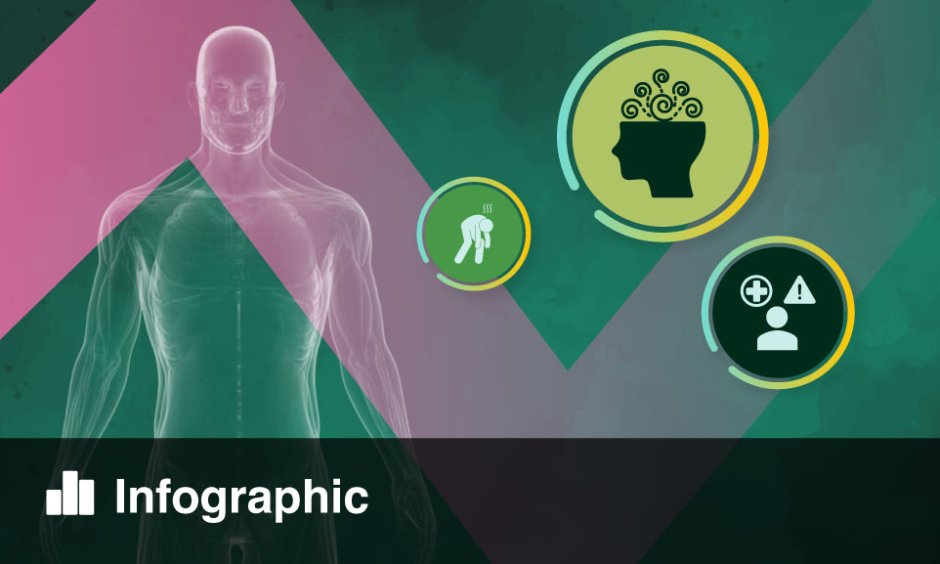Citation: EMJ Neurol. 2023;11[1]:21-23. DOI/10.33590/emjneurol/10306261. https://doi.org/10.33590/emjneurol/10306261.
![]()
HEMISPHERIC ASYMMETRIES
Mundorf explained that it is widely accepted that, in most individuals, the left hemisphere is dominant for language processing and speech, and the right hemisphere is dominant for visuospatial functions. These asymmetries are reflected in the body as the hemispheres control the contralateral side of the body; therefore, damage of the left side leads to impairment of the right side of the body and vice versa. These inherent differences between hemispheres pose one question: do these differences render one hemisphere more vulnerable to pathology, or is it the case that external factors impact one hemisphere more, leading to stronger impairment of one hemisphere?
LATERALITY IN NEUROLOGICAL DISEASES
Studies have shown that in Alzheimer’s disease (AD), the side of greater neurodegeneration and amyloid-β pathology always correlates with either poor verbal memory language impairment or visuospatial deficits. According to a recent study, no difference is shown in handedness. Even though earlier and faster grey matter atrophy and greater loss of neuronal connections are observed in the left hemisphere, there is no overall direction of asymmetry observed for asymmetric reductions in glucose metabolism, accelerated asymmetric cortical thinning, and asymmetric distribution of amyloid-β pathology. Studies in animal models of AD have demonstrated asymmetrical accumulation of fibrillar plaque burden and asymmetrical atrophy, predominantly associated with the right hemisphere.
Parkinson’s disease also demonstrates laterality with unilateral motor symptom onset, such as asymmetry in arm swing before clinical diagnosis. Cognitive symptoms correspond to the side of symptom onset. Interestingly, more symptoms (and of higher severity) are observed on the side of dominant hand. In the brain there is loss of dopaminergic neurons contralateral to motor symptom onset and asymmetric distribution of α-synuclein aggregates. Studies in animal models have shown that symptoms are induced via right-sided lesions and findings are in line with the humans.
The evidence in multiple sclerosis is less clear; there is a unilateral limp weakness at onset in some, but not all cases, and no difference in handedness. Aerobic performance and metabolic asymmetries between limbs and inflammation of the optic nerve in one eye are observed, and there is asymmetric distribution of lesions early in disease with no indication of one particular hemisphere being affected. Grey matter loss is asymmetric, with loss predominantly in the left hemisphere, which is expected given that most people are right-handed. One animal model study demonstrated reduced lateralisation of brain activation in motor areas compared to baseline.
In amyotrophic lateral sclerosis, there is unilateral limb weakness at onset in the dominant limb, motor symptoms get worse during progression of symptoms on side of onset, and there is concordance of side of onset and handedness in upper limb onset. However, there is no difference in handedness compared with the general population. Grey matter loss in contralateral hemisphere of side of symptom onset is observed in the brain. No animal models have investigated laterality yet.
CLINICAL IMPLICATIONS
For these neurological disorders, the side of symptom onset is often predictive of symptoms and severity, and reflects neurodegeneration in contralateral hemisphere, which is frequently left-sided. It is important to consider inherent asymmetries in lymphatic flow or unilateral dysfunction, as these could contribute to asymmetric disease pathogenesis.
Mundorf explained that it could be helpful during clinical examination to ask the patient about their dominant hand or limb preference, as this might give important information on symptom severity and the form of the cognitive impairments that would be expected. This could also help advance understanding of altered asymmetries in neurological diseases.
Going back to the question posed at the beginning, Mundorf explained that the hemispheric vulnerability theory is supported by genetic and epigenetic variations associated with asymmetry and disease, as well as by inherent neurochemical asymmetries and asymmetrical protein accumulation. The asymmetric onset of pathology is supported by the asymmetrical vagal nerve gut–brain path, where one hemisphere would be reached first. Overall, there is little research to help answer the question.
In their concluding remarks, Mundorf emphasised that separating the hemispheres in genetic, transcriptomic, imaging, and cell staining studies is important, as grouping tissue from both hemispheres may mask or dilute hemisphere-specific results. Mundorf explained that laterality matters, with the side of onset often correlating with hand and limb preferences, and is often predictive of the symptoms to be expected and symptom severity. The side of the symptom onset reflects neurodegeneration in contralateral hemisphere and is frequently left-sided.
AMYGDALA ASYMMETRIES IN CLINICAL AND NON-CLINICAL POPULATIONS
Introducing the structure and function of the amygdala, Ocklenburg explained that when it comes to fear processing in the brain, the most relevant activity is detected in the amygdala with an asymmetry in activity detected between the two brain hemispheres.
The amygdala is a core structure in the neuronal network that underlies emotional processing, and it is important in the evaluation and integration of sensory information, assigning emotional value to sensory information. This means that, for example, looking at a snake on a phone screen is not as fear-inducing as seeing a snake in the wild. The amygdala is frequently investigated in patients with relation to psychiatric disorders but also neurological disorders.
Ocklenburg explained that the amygdala consist of groups of distinct nuclei (13–15 depending on how they are characterised), grouped in three larger subdivisions: the basolateral nuclei, which are the input layer of the amygdala where the sensory information gets transferred in the amygdala; the cortical-like nuclei, which are structurally closer to the cortex; and the centromedial nuclei, which are the output layer of the amygdala, where information processed in the amygdala gets transferred to other brain regions. The two brain hemispheres are not equivalent functionally; in fact, many brain regions show hemispheric asymmetries, in parameters such as cortical thickness and surface area. For many higher cognitive functions, one hemisphere is faster and more accurate than the other in most of the population.
Studies indicate that the basolateral nuclei, specifically the lateral nucleus, show a rightward asymmetry and the rest of the amygdala are non-asymmetric. The lateral nucleus receives and integrates sensory inputs from the thalamus and the cortex and attaches emotional significance to sensory stimuli.
Ocklenburg went to explain prevailing models of how emotions might be organised in the brain, and went through a study that their group performed, demonstrating that the right amygdala dominates pain processing as well as fear processing. Ocklenburg explained that for conscious processing where a stimulus is given over time, the left amygdala seems to dominate, whereas for unconscious processing with short stimulus presentation, there is a right hemisphere dominance.
Based on these findings, Ocklenburg’s group came up with the TEP model, interpreting hemispheric asymmetries in the amygdala: Temporal dynamics, meaning that there is left amygdala dominance for sustained stimuli and right amygdala processes for masked presentation; Emotional valence based on animal research pointing towards an important role of right amygdala in fear processing (but less important than previously thought); and Perceptual properties, meaning there is a leftward dominance for language stimuli and rightward dominance for pictorial stimuli.
CLINICAL ASPECTS
A meta-analysis of several studies demonstrated a 5.2% reduction in amygdala volume on the left in patients with major depressive disorder, and a 7.4% reduction on the right showing greater degeneration in the right and a shift toward the left.
In neurodegenerative disorders, findings have shown that in Parkinson’s disease there is a loss of dopaminergic neurons in the substantia nigra, and in AD there is an asymmetric neurodegeneration of subcortical structure. Shape asymmetries in the amygdala are predictive for disease progression, showing increase asymmetry with advanced disease stage, which reflects unilateral neurodegeneration stronger in AD than mild cognitive impairment. Neurogenetic studies have shown that genes that are functionally associated with AD had an influence on structural asymmetries in the amygdala showing that biological underpinnings of AD and amygdala asymmetry interact.
In their concluding remarks, Ocklenburg emphasised the importance of improving study design to disentangle alterations found in patients, which will help in unravelling neuronal implications and advance treatment options.







